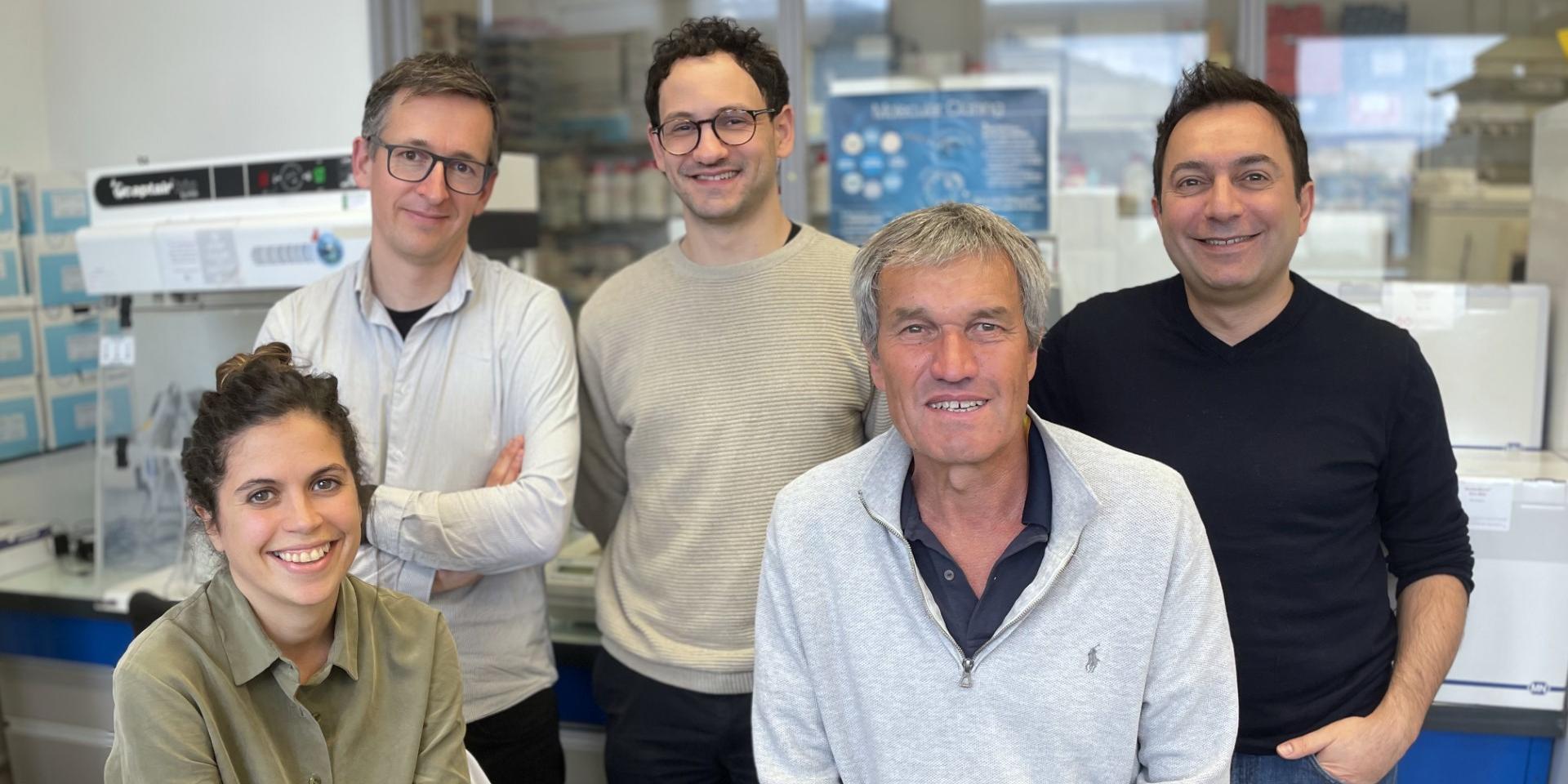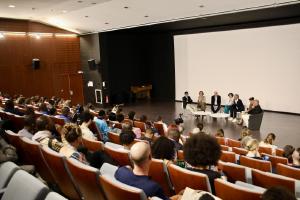on the February 13, 2024

In a paper published in the journal Cell Genomics in February 2024, Gaël Cristofari's team at IRCAN has established the most detailed epigenetic (DNA methylation) map yet obtained for active human jumping genes, with numerous discoveries about their regulation. Jumping genes make up the majority of what is often referred to as the "dark matter" of our genome, as they are not easily accessible by conventional genetic analysis methods.
How is L1 retrotransposon activity controlled?
DNA methylation, a chemical modification involved in epigenetic gene regulation, has long been known to repress L1 retrotransposon activity. However, until now, L1 retrotransposon methylation was only accessible in aggregate, without the identity of each copy being known. To identify potentially active copies, and their location in our chromosomes - a needle in a haystack! - the team led by Gaël Cristofari, Inserm Research Director at the Institut de Recherche sur le Cancer et le Vieillissement de Nice (IRCAN, Inserm U1081, CNRS UMR7284, Université Côte d'Azur) have developed a new epigenetic mapping technique for these highly repeated sequences. Using this approach, they have obtained the methylation status of each copy of L1, in relation to their position in the chromosomes, in multiple cell types and tissues. This work has been published in the journal Cell Genomics with the help of their collaborators at IRCAN (Simona Saccani's team) and at the Unité Épigénétique et Destin Cellulaire in Paris (Pierre-Antoine Defossez's team). This epigenetic map of L1 retrotransposons - the most accurate to date - has been integrated with a very large number of available genetic and epigenetic data available in public databases, and has revealed unexpected heterogeneity among L1 copies. "Until now, L1 retrotransposons were thought to be massively reactivated in tumors as they undergo a global loss of DNA methylation, particularly at repeated DNA sequences. By mapping methylation copy by copy, we realized that the loss of methylation mainly concerned very old L1s, molecular fossils that have accumulated mutations during primate evolution and are now unable to multiply. In reality, only a small handful of intact L1 retrotransposons escape epigenetic repression, and we're now able to locate them among a large number of L1s that remain methylated or have lost their methylation but are mutated."explains Gaël Cristofari.
This new epigenetic map has brought its share of discoveries. For example, epigenetic changes in L1 retrotransposons frequently spread to surrounding chromosomal regions, influencing the binding of transcription factors that can activate the retrotransposons themselves, or even neighboring genes. For example, in breast cancer cells, the loss of methylation of certain retrotransposons is associated with binding of the estrogen receptor, leading to retrotransposon activation and the synthesis of new RNAs and proteins, some of which can activate anti-tumour immunity. Another surprise was the finding that loss of methylation did not necessarily rhyme with reactivation, and that most copies were locked by other epigenetic mechanisms in addition to DNA methylation.
These results provide a better understanding of what controls jumping genes in humans, how they are reactivated and how they influence genes around their integration site. This is an essential step towards being able to exploit this still little-explored part of our DNA - the hidden face of the genome - for therapeutic purposes, for example by using epigenetic treatments to force the reactivation of retrotransposons in tumors and stimulate their elimination by the immune system, or to create anti-tumor vaccines.
This work was supported by Agence Nationale de la Recherche, Fondation pour la Recherche Médicale, Institut National Du Cancer, Fondation ARC, Canceropôle PACA, Inserm (GOLD Cross-cutting Program on Genomic Variability), and CNRS (GDR 3546).
- References
-
Lanciano S*, Philippe C*, Sarkar A, Pratella D, Domrane C, Doucet AJ, van Essen D, Saccani S, Ferry L, Defossez PA, Cristofari G. Locus-level L1 DNA methylation profiling reveals the epigenetic and transcriptional interplay between L1s and their integration sites. Cell Genomics (2024). https://doi.org/10.1016/j.xgen.2024.100498 (*contribution égale)
- Contact
-
Gaël Cristofari - gael.cristofari@univ-cotedazur.fr



